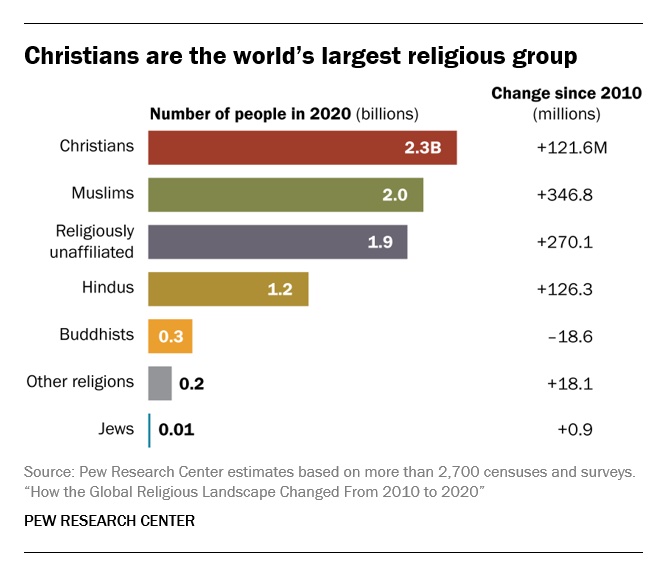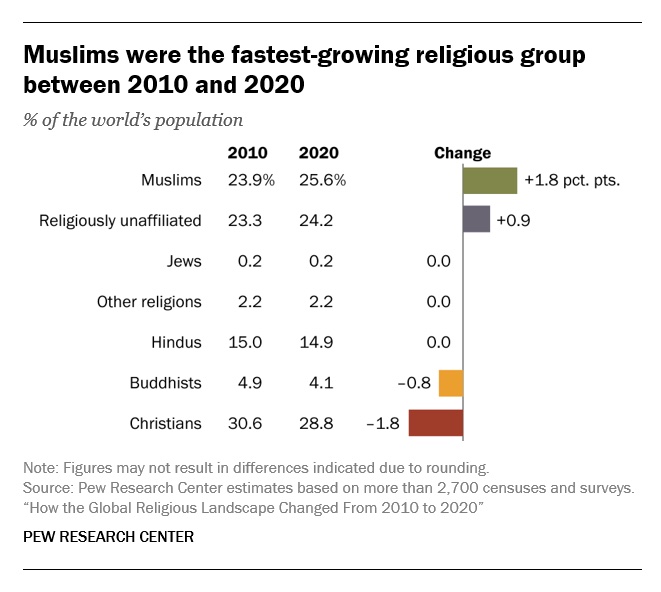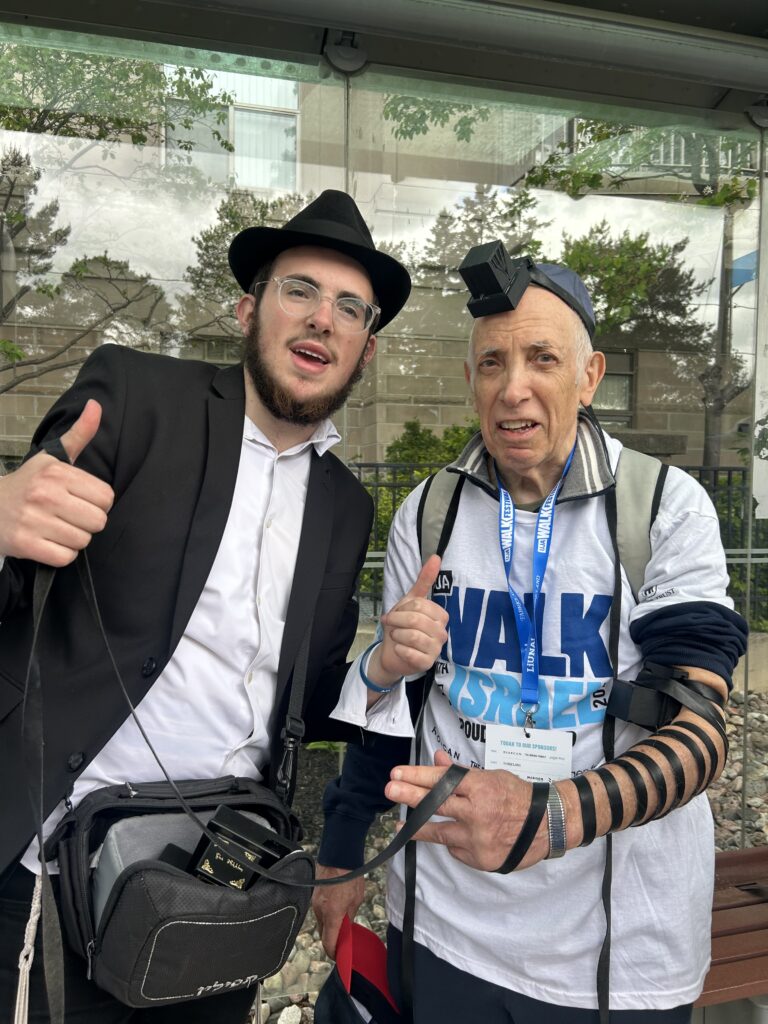Uncategorized
In Ukraine, Hanukkah candles are a lifeline in the midst of power outages
(JTA) — In the days before Hanukkah, which starts Sunday night, a few men and women from two Conservative institutions in Israel will travel to the small Jewish community in Chernivtsi, Ukraine, with a supply of needed items.
Amid the power outages stemming from Russian attacks, the volunteers will have blankets and sweatshirts for the cold, as well as menorahs and kippahs for religious observance purposes.
The 300 boxes of Hanukkah candles will do double duty.
These days, the power in Chernivtsi, a city of around 250,000 (before the war) in western Ukraine, is more off than on. So the candles will do more than allude to the story of the Maccabees — they will help light Jewish homes across the city.
“This year it’s really important” to have and use Hanukkah candles, said Lev Kleiman, leader of the city’s Conservative Jewish community, in a recent Zoom interview.
Although the need is urgent, “We will hold onto the candles until Hanukkah,” Kleiman added, his words in Russian interpreted by Rabbi Irina Gritsevskaya, the Russian-born and Jerusalem-based “circuit rabbi” of the Conservative movement’s Schechter Institutes and executive director of its Midreshet Schechter Ukraine. The organizations are coordinating the transport of holiday supplies to Chernivtsi.
Among a few “couriers” bringing needed items to Jewish communities in Ukraine, Gritsevskaya has made several trips there over the last 10 months. At the start of the war, she urged Jews in other cities to make their way to Chernivtsi, which was far from the intense fighting on the eastern border.
Chernivtsi, which served as a place of refuge for thousands of displaced people from elsewhere in parts of the Soviet Union threatened by the Nazi army during World War II, is again attracting refugees from throughout the country. Earlier in the current war, Kleiman turned his synagogue into a refugee center for some of the millions of Ukrainians fleeing their homeland. The city also became a gathering site for worldwide faith leaders who have denounced the violence and expressed solidarity with the embattled Ukrainians.
In addition to no heat and light in Chernivtsi, lack of electricity means lack of TV and radio use, along with spotty internet service. (Erin Clark/The Boston Globe via Getty Images)
Located on the Prut River, Chernivtsi (known at one time as “Jerusalem upon the Prut” for the strength of its Jewish community) is 25 miles north of the Romanian border and home to one of the country’s most active Conservative communities. The city’s Jewish population before the war began was estimated at 2,000, including many Holocaust survivors.
And today, following the invasion? The number could be larger or smaller, no one is counting — but some western cities have experienced population growth due to all of the migration.
“No one knows,” Kleiman said. “Many left, but many came.”
As in other Ukrainian cities, many Jews in Chernivtsi — especially women, senior citizens and children, everyone except draft-age males — have migrated. But uncounted other ones have come to a place of relative safety, either renting apartments or staying in ones under the auspices of the Jewish community. Most of the Jews in Chernivtsi now are those exempt from military service, Kleiman said. Others stayed in order to be with their husbands and fathers who joined the Ukrainian army after the war began, or to care for their aged parents.
Despite signs of war — rifle-carrying soldiers and policemen on the streets, empty shelves in stores because of shortages, people hurrying to safety when they hear sirens — Jewish life there has continued, according to Kleiman. The most active organizations in the city are the local outpost of the Hasidic Chabad-Lubavitch movement, the JDC-supported Hesed Shoshana Welfare Center and Kleiman’s Kehillat Aviv Synagogue (his official title is coordinator), which sponsors daily Jewish activities.
The synagogue — located near the Chabad center, with which it cooperates on relief activities — is housed in a small, two-story building that contains an office, a kitchen and a large multi-function hall. Kleiman says Hanukkah in 2022 will be more important than in past years because in addition to its ability to bring people together,the holiday also asserts Jewish survival.
“There are a lot of parallels,” Kleiman said of the holiday and his community’s current situation.
Electricity in Chernivtsi flows only a few hours each day, and at night, no street lights are on, thanks to incessant Russian bombing of Ukraine’s infrastructure, and to government-imposed restrictions designed to conserve the little available resources.
A holiday of lights sans lights? “We’ve never done it before,” Kleiman said, adding that the Jews in his city understand the holiday’s symbolism.
Some will come to the synagogue for a communal candle-lighting, according to Kleiman. Others will light their candles at home, in their windows. Like all other buildings in Chernivtsi, Kleiman’s office and apartment are subject to periodic electricity blackouts, often announced in advance.
“With G-d’s help we will soon have a generator” – and 24/7 lights and heat in the synagogue, he said. Until then, he and the other residents of Chernivtsi will shiver. The temperature in the city was 29 degrees Fahrenheit during the Zoom interview, and a light snow was falling.
Lev Kleiman is shown with his community’s Torah ark. (Courtesy of the Schechter Institute of Jewish Studies)
Though no Russian missiles have fallen inside Chernivtsi itself, some have reached the outskirts, causing damage to the area’s infrastructure and utilities. Other parts of the country have not escaped the Russian onslaught; two months ago more than 4,000 Ukrainian towns, villages and cities had experienced outages, and 40% of the country’s grid was crippled. The bombing of power stations is a major part of Vladimir Putin’s plan to weaponize Ukraine’s weather to bully the country into submission as winter sets in. (In addition to candles and other supplies, some Jewish groups are sending generators and heaters.)
Home in past years to such prominent Jews as actress Mila Kunis, the late Israeli writer Aharon Appelfeld, former Knesset speaker Yuli Edelstein and the late poet-translator Paul Celan (born Paul Antschel), Chernivtsi has an honored place in the country’s history. On the eve of World War II, some 45,000 Jews lived in the city, about a third of the country’s total Jewish population. The collaborationist Romanian authorities, who ruled the area, established a ghetto in Chernivtsi where 32,000 Jews, including many from the surrounding region, were interned; from there, they were shipped to concentration camps in the nearby Transnistria area, where 60% died.
A third of the city’s Jews survived the war. The population grew to about 17,000 when widespread migration from the USSR began in the late 1980s. Like many cities in the former Soviet Union, Chernivtsi has experienced a modest Jewish revival since Communism fell and open expression of Judaism was allowed again. The revival was spurred largely by the arrival of Chabad emissary couples and programs sponsored by the American Jewish Joint Distribution Committee.
But though Chabad, an Orthodox movement, is the prime Jewish mover in Ukraine, there is also a growing non-Orthodox presence in the country. The Israeli branch of the Conservative movement sent its first full-time representatives to Ukraine a decade ago. The movement’s Jerusalem-based Masorti Olami organization sponsors a network of synagogues, schools, camps, youth groups and kosher certification services across Ukraine. A few decades ago, Kleiman attended the Midreshet Yerushalayim day school in Chernivtsi and Camp Ramah Ukraine.
In addition, the Reform movement’s World Union for Progressive Judaism has established 10 congregations in the country; the movement estimates that 14,000 Ukrainian Jews identify as members.
Even though the need is urgent, Kleiman said his community will wait to use the candles until the start of Hanukkah. (Courtesy of the Schechter Institute of Jewish Studies)
These are boring days in southwest Ukraine. TV and radio are only available when electricity is available, and internet and cellphone service is always spotty. Kleiman calls the war a test of the people’s mettle, a spur to their growing national unity. As a form of solidarity, many have switched the language of their conversations from Russian — the lingua franca during the Soviet days — to Ukrainian.
Nobody in Chernivtsi’s Jewish community is starving, Kleiman said. Kosher food is available at the synagogue, and volunteers bring supplies to people unable to travel. Overall, the morale of the Jewish community is good, he says. Native-born members of the community “support each other,” while some people from other parts of the country, separated from their families, with fewer personal connections, are depressed, he said.
In the boxes of materials that Rabbi Gritsevskaya is to bring to Chernivtsi from Israel are also some Israeli-style dreidels, whose Hebrew letters stand for the words “Nes gadol haya po”: “A great miracle happened here.” On dreidels used in the Diaspora, the last word usually is sham, “there.”
The linguistic symbolism in a land under siege is clear, said Kleiman, who plans to explain the message to the members of the community taking home a dreidel.
“I understand — they will understand too,” he says. “I hope the miracle will also happen in Ukraine.”
—
The post In Ukraine, Hanukkah candles are a lifeline in the midst of power outages appeared first on Jewish Telegraphic Agency.
Uncategorized
How the Global Religious Landscape Changed from 2010 to 2020

Muslims grew fastest; Christians lagged behind global population increase
• Christians are the world’s largest religious group, at 28.8% of the global population. They are a majority everywhere except the Asia-Pacific and Middle East-North Africa regions. Sub-Saharan Africa has surpassed Europe in having the largest number of Christians. But Christians are shrinking as a share of the global population, as millions of Christians “switch” out of religion to become religiously unaffiliated.

• Muslims are the world’s second-largest religious group (25.6% of the world’s population) and the fastest-growing major religion, largely due to Muslims’ relatively young age structure and high fertility rate. They make up the vast majority of the population in the Middle East-North Africa region. In all other regions, Muslims are a religious minority, including in the Asia-Pacific region (which is home to the greatest number of Muslims).

• The religiously unaffiliated population is the world’s third-largest religious category (24.2% of the global population), after Christians and Muslims. Between 2010 and 2020, religiously unaffiliated people grew more than any group except Muslims, despite their demographic disadvantages of an older age structure and relatively low fertility. The unaffiliated made up a majority of the population in 10 countries and territories in 2020, up from seven a decade earlier.
• Hindus are the fourth-largest religious category (14.9% of the world’s population), after Christians, Muslims and religiously unaffiliated people. Most (99%) live in the Asia-Pacific region; 95% of all Hindus live in India alone. Between 2010 and 2020, Hindus remained a stable share of the world’s population because their fertility resembles the global average, and surveys indicate that switching out of or into Hinduism is rare.
• Buddhists (4.1% of the world’s population) are the only group in this report whose number declined worldwide between 2010 and 2020. This was due both to religious disaffiliation among Buddhists in East Asia and to a relatively low birth rate among Buddhists, who tend to live in countries with older populations. Most of the world’s Buddhists (98%) reside in the Asia-Pacific region, the birthplace of Buddhism.
• Jews, the smallest religious group analyzed separately in this report (0.2% of the world’s population), lagged behind global population growth between 2010 and 2020 – despite having fertility rates on par with the global average – due to their older age structure. Most Jews live either in North America (primarily in the United States) or in the Middle East-North Africa region (almost exclusively in Israel).
These are among the key findings of a Pew Research Center analysis of more than 2,700 censuses and surveys, including census data releases that were delayed due to the coronavirus pandemic. This report is part of the Pew-Templeton Global Religious Futures project, which analyzes global religious change and its impact on societies around the world. Funding for the Global Religious Futures project comes from The Pew Charitable Trusts and the John Templeton Foundation.
Uncategorized
Antisemitism in some unlikely places in America

By HENRY SREBRNIK Antisemitism flourishes in a place where few might expect to confront it – medical schools and among doctors. It affects Jews, I think, more emotionally than Judeophobia in other fields.
Medicine has long been a Jewish profession with a history going back centuries. We all know the jokes about “my son – now also my daughter – the doctor.” Physicians take the Hippocratic Oath to heal the sick, regardless of their ethnicity or religion. When we are ill doctors often become the people who save us from debilitating illness and even death. So this is all the more shocking.
Yes, in earlier periods there were medical schools with quotas and hospitals who refused or limited the number of Jews they allowed to be affiliated with them. It’s why we built Jewish hospitals and practices. And of course, we all shudder at the history of Nazi doctors and euthanasia in Germany and in the concentration camps of Europe. But all this – so we thought – was a thing of a dark past. Yet now it has made a comeback, along with many other horrors we assume might never reappear.
Since the Hamas attack on Israel on October 7, 2023, there has been a resurgence of antisemitism, also noticeable in the world of healthcare. This is not just a Canadian issue. Two articles on the Jewish website Tablet, published Nov. 21, 2023, and May 18, 2025, spoke to this problem in American medicine as well, referencing a study by Ian Kingsbury and Jay P. Greene of Do No Harm, a health care advocacy group, based on data amassed by the organization Stop Antisemitism. They identified a wave of open Jew-hatred by medical professionals, medical schools, and professional associations, often driven by foreign-trained doctors importing the Jew-hatred of their native countries, suggesting “that a field entrusted with healing is becoming a licensed purveyor of hatred.”
Activists from Doctors Against Genocide, American Palestinian Women’s Association, and CODEPINK held a demonstration calling for an immediate cease-fire in Gaza at the Hart Senate Office Building in Washington, D.C., Nov. 16, 2023, almost as soon as the war began. A doctor in Tampa took to social media to post a Palestinian flag with the caption “about time!!!” The medical director of a cancer centre in Dearborn, Michigan, posted on social media: “What a beautiful morning. What a beautiful day.” Even in New York, a physician commented on Instagram that “Zionist settlers” got “a taste of their own medicine.” A Boston-based dentist was filmed ripping down posters of Israeli victims and a professor at the University of Pennsylvania Perelman School of Medicine did the same. Almost three-quarters of American medical associations felt the need to speak out on the war in Ukraine but almost three-quarters had nothing to say about the war in Israel.
Antisemitism in academic medical centres is fostering noxious environments which deprive Jewish healthcare professionals of their civil right to work in spaces free from discrimination and hate, according to a study by the Data & Analytics Department of StandWithUs, an international, non-partisan education organization that supports Israel and fights antisemitism.
“Academia today is increasingly cultivating an environment which is hostile to Jews, as well as members of other religious and ethnic groups,” StandWithUs director of data and analytics, and study co-author, Alexandra Fishman, said on May 5 in a press release. “Academic institutions should be upholding the integrity of scholarship, prioritizing civil discourse, rather than allowing bias or personal agendas to guide academic culture.”
The study, “Antisemitism in American Healthcare: The Role of Workplace Environment,” included survey data showing that 62.8 per cent of Jewish healthcare professionals employed by campus-based medical centres reported experiencing antisemitism, a far higher rate than those working in private practice and community hospitals. Fueling the rise in hate, it added, were repeated failures of DEI (diversity, equity, and inclusion) initiatives to educate workers about antisemitism, increasing, the report said, the likelihood of antisemitic activity.
“When administrators and colleagues understand what antisemitism looks like, it clearly correlates with less antisemitism in the workplace,” co-author and Yeshiva University professor Dr. Charles Auerbach reported. “Recognition is a powerful tool — institutions that foster awareness create safer, more inclusive environments for everyone.”
Last December, the Data & Analytics Department also published a study which found that nearly 40 per cent of Jewish American health-care professionals have encountered antisemitism in the workplace, either as witnesses or victims. The study included a survey of 645 Jewish health workers, a substantial number of whom said they were subject to “social and professional isolation.” The problem left more than one quarter of the survey cohort, 26.4 per cent, “feeling unsafe or threatened.”
The official journal of the Alliance for Academic Internal Medicine concurs. According to “The Moral Imperative of Countering Antisemitism in US Medicine – A Way Forward,” by Hedy S. Wald and Steven Roth, published in the October 2024 issue of the American Journal of Medicine, increased antisemitism in the United States has created a hostile learning and practice environment in medical settings. This includes instances of antisemitic behaviour and the use of antisemitic symbols at medical school commencements.
Examples of its impact upon medicine include medical students’ social media postings claiming that Jews wield disproportionate power, antisemitic slogans at the University of California, Los Angeles (UCLA) David Geffen School of Medicine, antisemitic graffiti at the University of California, San Francisco (UCSF) Cancer Centre, Jewish medical students’ exposure to demonization of Israel diatribes and rationalizing terrorism; and faculty, including a professor of medicine at UCSF, posting antisemitic tropes and derogatory comments about Jewish health care professionals. Jewish medical students’ fears of retribution, should they speak out, have been reported. “Our recent unpublished survey of Jewish physicians and trainees demonstrated a twofold increase from 40% to 88% for those who experienced antisemitism prior to vs after October 7,” they stated.
In some schools, Jewish faculty are speaking out. In February, the Jewish Faculty Resilience Group at UCLA accused the institution in an open letter of “ignoring” antisemitism at the School of Medicine, charging that its indifference to the matter “continues to encourage more antisemitism.” It added that discrimination at the medical school has caused demonstrable harm to Jewish students and faculty. Student clubs, it said, are denied recognition for arbitrary reasons; Jewish faculty whose ethnic backgrounds were previously unknown are purged from the payrolls upon being identified as Jews; and anyone who refuses to participate in anti-Zionist events is “intimidated” and pressured.
Given these findings, many American physicians are worried not only as Jewish doctors and professionals, but for Jewish patients who are more than ever concerned with whom they’re meeting. Can we really conceive of a future where you’re not sure if “the doctor will hate you now?”
Henry Srebrnik is a professor of political science at the University of Prince Edward Island.
Uncategorized
The 2025 Toronto Walk (and talk ) for Israel

By GERRY POSNER There are walks and then there are walks. The Toronto UJA Walk for Israel on May 25, 2025 was one of a kind, at least as far as Canada and Jews are concerned. The number of people present was estimated to be 56,000 people or 112,000 total shoes. (How they get to that number is bewildering to me, since there is no one counting). This was 6,000 more than last year. Whether it is true or not, take it from me, it was packed. The synagogues in Canada should be so fortunate to get those numbers in total on High Holidays. The picture here gives you a sense of the size of the crowd.

This was my first walk in Toronto for Israel and I was with my granddaughter, Samantha Pyzer (not to forget her two friends whom she managed to meet at the site, no small feat, even with iPhones as aids). The official proceedings began at 9:00 a.m. and the walk at 10:00 a.m. There was entertainment to begin with, also along the way, and at the finish as well. The finish line this year was the Prosserman Centre or the JCC as it often called. The walk itself was perhaps 4 kilometres – not very long, but the walking was slow, especially at the beginning. There were lots of strollers, even baby carriages, though I did not see any wheelchairs. All ages participated on this walk. I figured, based on what I could see on the faces of people all around me that, although I was not the oldest one on the walk, I bet I made the top 100 – more likely the top 20.
What was a highlight for me was the number of Winnipeggers I met, both past and present. Connecting with them seemed to be much like a fluke. No doubt, I missed la lot of them, but I saw, in no particular order (I could not recall the order if my life depended on it): Alta Sigesmund, (who was, a long time ago, my daughter Amira’s teacher), Marni Samphir, Karla Berbrayer and her husband Dr. Allan Kraut and family. Then, when Samantha and I made it to the end and sat down to eat, I struck up a conversation with a woman unknown to me and as we chatted, she confirmed her former Winnipeg status as a sister-in- law to David Devere, as in Betty Shwemer, the sister of Cecile Devere. I also chanced upon Terri Cherniack, only because I paused for a moment and she spotted me. As we closed in near the finish, I met ( hey were on their way back), Earl and Suzanne Golden and son Matthew, as well as Daniel Glazerman. That stop caused me to lose my granddaughter and her pals. Try finding them amid the noise and size of the crowd – but I pulled it off.

As I was in line to get food, I started chatting with a guy in the vicinity of my age. I dropped the Winnipeg link and the floodgates opened with “ Did I know Jack and Joanie Rusen?” So that was an interesting few minutes. And I was not too terribly surprised to come across some of my Pickleball family. All of these meetings, along with spotting some of my sister’s family and other cousins, were carried on with the sound of the shofar as we moved along the way. In short, this was a happening. Merchants selling a variety of products, many of them Israeli based, were in evidence and, of course, the day could not have ended without the laying of tefillin, aided by Chabad, who have perfected the procedure to take less than a minute. See the photo. Chabad had a willing audience.
Aside from the joy of sharing this experience with my granddaughter, the very presence of all these Jews gathered together for a common reason made this day very special to me. However, there was a downside to the day. The downside was that, as we began to walk back to our car there was no other way I could figure out how to return when the rains came and came. While we walked faster, we were impeded by pouring rain and puddles. But Samantha wanted to persevere, as did I. We made it, but were drenched. My runners are still drying out as I write this two days later.
What with being surrounded by 56,000 people, the noise, the slow walking, and the rain, I can still say the day was a real highlight for me – one of the better moments since our arrival in Toronto in 2012. As well as the photos we took along the way, I have the reminder of the day, courtesy of the UJA, as evidenced from the photo. It was not just the walk, but the talk that accompanied the walk that made it so worthwhile for me. I would do it again, minus the rain.
